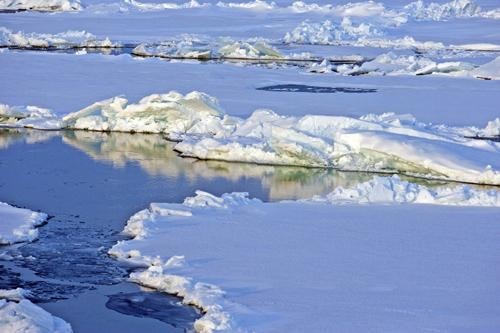As Greenland and Antarctica’s ice sheets disappear, they make sea levels rise and Earth’s problems that much bigger.
Researchers in a UA-led study uncovered the effects of warming ocean temperatures on the two ice sheets using 19 different climate models. The simulated worlds comprise 2 million lines of code, are compiled across decades of work and allow scientists to project and plan ahead, said Joellen Russell, an assistant professor of geosciences, climate modeler and ocean dynamicist who took part in the study. Ice sheets are titanic chunks of ice planted on land.
Warming air temperatures cause the polar ice sheets to melt away from the surface. In contrast, hotter oceans cause base erosion, inflict greater instability and seem to have a bigger impact, said Jonathan Overpeck, co-director of the UA Institute of the Environment.
Jianjun Yin, an assistant professor of geosciences and lead researcher and climate modeler for the study, said measuring the ice sheets’ local ocean temperatures has been a challenge due to lurking icebergs that are not boat-friendly. And now, for the first time in history, scientists have quantified and compared subsurface ocean warming around the polar ice sheets.
The sea level currently rises at a rate of about 3 millimeters per year, Yin said. The subsurface oceans along Greenland are struggling to keep their current temperatures just above the freezing point of 0 degrees Celsius and could increase 2 degrees by the end of the century. Antarctica’s slightly slower temperature increase of 0.5 C could occur by 2100 as well.
Passing off the greenhouse gas problem to later generations may not be an option either.
The global average temperature rising, penguin colonies being wiped out, the Great Barrier Reef on the inevitable path to destruction and other harsh impacts will have to be dealt with within the next 20 to 40 years, Russell said.
The environmental effects on Tucson’s monsoon season would not be the extent of the local repercussions. Even though sea level rise is not a problem in Southern Arizona, the region may catch the effects of economic ruin from impacted areas that will have to be collectively made up through higher taxes, Russell added. Human migration from devastated areas could take a toll as well.
“”I’m the one who’s going to be dead,”” Russell said. “”You guys are going to be the ones that have to deal with the consequences …. It’s your world … If I were a student here at the UA, I’d want to get as informed as possible so that I can help make the decisions that will have to be made.””
In a world of worst-case scenarios, where the Greenland and Antarctica ice sheets no longer exist, global sea levels would rise 77 meters. And although a disaster like that would occur over the course of millennia, Yin said making minor changes today could change the course of human history tomorrow.
“”I’m biking every day,”” Yin said.
The key to eliminating the threat is to dramatically reduce the emissions of greenhouse gases, particularly carbon dioxide and methane, Overpeck said.
“”Obviously, this can’t be done overnight,”” Overpeck added. “”But the longer the people of the planet wait to curb greenhouse gas emissions, the more sea level rise we’ll have to deal with.””









